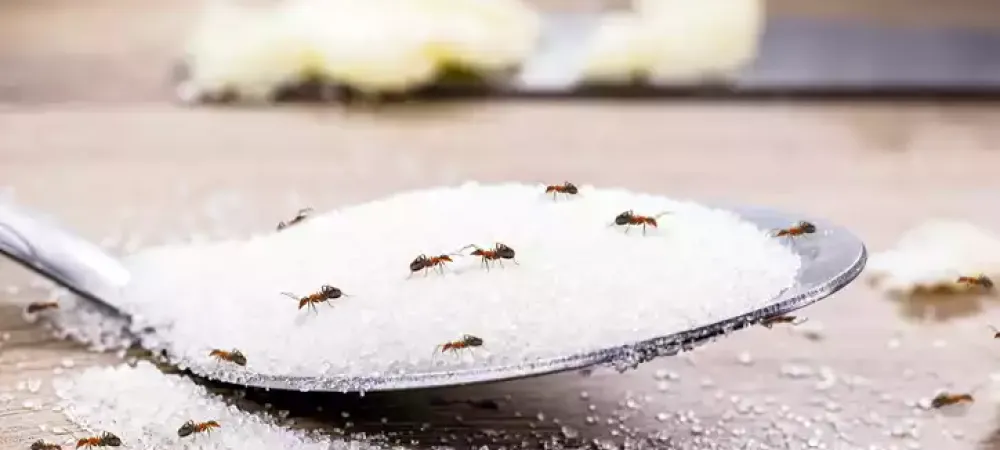Common Ant Species in North Texas

That unsettling moment when you spot a line of ants crawling across your kitchen counter—it’s not just frustrating, it’s the start of a battle. But before you reach for the nearest spray, take a step back. The key to winning the war on ants starts with knowing exactly what type you’re dealing with.
Different ant species require different strategies, and what works for one type might do nothing for another. In this blog, we’ll walk you through the most common ant species found here in North Texas, how to tell them apart, and why proper identification is essential for effective treatment and prevention.
Why Ant Identification Matters
Ants aren’t all the same, they're far from it. Some are sugar-lovers, while others are after protein or grease. Some build nests inside your walls, others under your driveway. Here’s why it’s worth taking a closer look:
- Different habits: Nesting locations, food preferences, and foraging behaviors vary by species.
- Different control methods: Some ants respond to baiting, others need targeted sprays or nest removal.
- Misidentification wastes time: Using the wrong product or method can actually make an infestation worse—or drag it out unnecessarily.
Knowing the type of ant in your home helps you get to the root of the problem faster—and resolve it quicker.
Key Characteristics for Identification
If you want to figure out what kind of ants you’re dealing with, start with these distinguishing traits:
- Size: Ants can range from tiny (1/16") to quite large (½").
- Color: Black, brown, reddish, or two-toned.
- Number of nodes: Look for the small segments between the thorax and abdomen—1 or 2 nodes can help with ID.
- Antennae shape: Some ants have elbowed or straight antennae with different segment counts.
- Behavior: Trail patterns, preferred nesting spots (walls, pavement, soil), and food preferences are important clues.
Common Ant Species in North Texas
Odorous House Ants
- What they look like: Small, dark brown to black; emit a rotten coconut smell when crushed.
- Behavior: Attracted to sweet foods; build nests in wall voids, under floors, and beneath stones or logs outdoors.
- Why they’re problematic: These ants form large colonies with multiple queens, making them tough to eliminate without a comprehensive approach.
Pavement Ants
- What they look like: Small, dark brown to black, with fine grooves on their thorax.
- Behavior: Nest beneath concrete slabs, driveways, and patios. Forage for sweets, grease, and dead insects—especially after rain.
- Why they’re problematic: They frequently enter homes seeking food and moisture, and their nests can spread quickly if left untreated.
Carpenter Ants
- What they look like: Large (¼" to ½"), black or reddish-black, with a single node.
- Behavior: Don’t eat wood, but tunnel through damp or decaying wood to build nests. Prefer sweets and proteins.
- Why they’re problematic: Over time, they can cause serious damage to wooden structures like beams, decks, or siding.
Argentine Ants
- What they look like: Small, light to dark brown, uniform in size.
- Behavior: Form massive colonies with many queens. Follow wide, noticeable trails. Drawn to sugary substances.
- Why they’re problematic: Highly adaptable and fast-spreading—they can quickly take over a yard or structure and outcompete native ant species.
Fire Ants
- What they look like: Reddish-brown with a darker abdomen, equipped with a painful stinger.
- Behavior: Build large dome-shaped mounds in open areas. Can enter homes during extreme weather.
- Why they’re problematic: Their stings are painful and can be dangerous, especially for children or pets. Outdoor infestations often disrupt lawns and landscaping.
What to Do Once You've Identified Your Ant
When it comes to ants, knowledge really is power. Identifying the species correctly is the first and most important step toward solving the issue for good.
Once you have a general idea of what species you’re dealing with, take these steps:
- Clean up attractants: Wipe up crumbs and spills promptly, store food in sealed containers, and don’t leave pet food out overnight.
- Seal entry points: Use caulk or weather stripping to close gaps around windows, doors, and utility lines.
- Use the right treatment: Some ants are bait-sensitive, while others need perimeter treatments or nest targeting. Misapplication can actually cause colony budding in certain species.
- Know when to call in the pros: If you’re seeing ants regularly despite your efforts—or if you’re still unsure what kind you’re dealing with—it’s time for expert help.
Get Professional Ant Control Services
At Myles Pest Services, our exterminators are trained to spot the subtle differences between ant species and tailor treatment plans that actually work. From trail-following Argentine ants to structure-invading carpenter ants, we know how to handle each infestation the right way.
Don’t waste time and money on the wrong solution. Contact us today for expert inspection and targeted ant control services since 1989.

